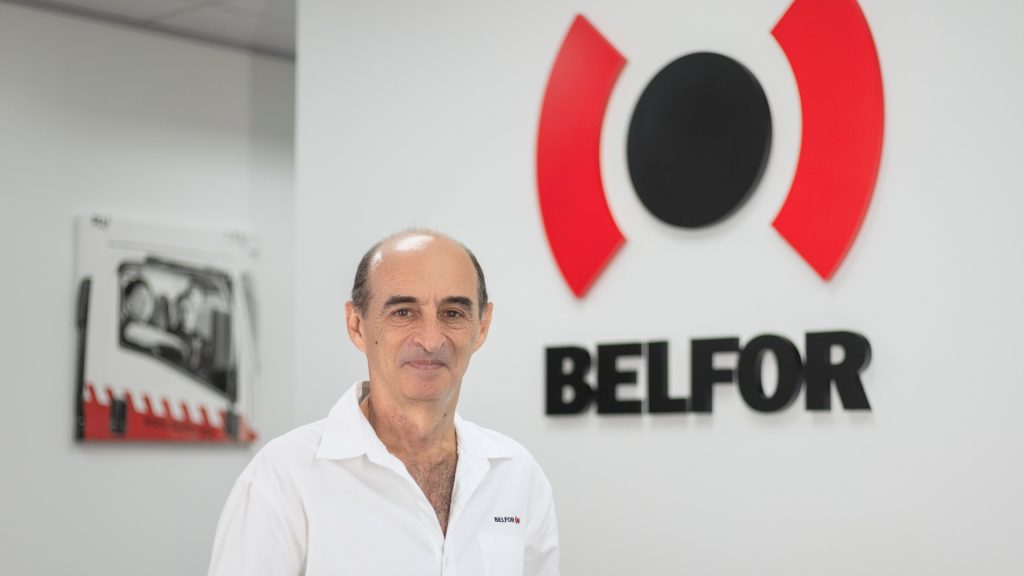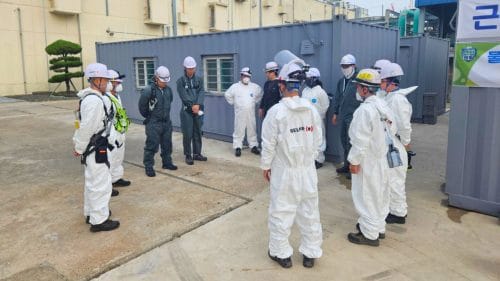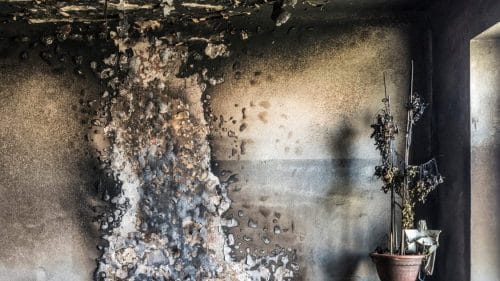Asia’s Next Billion-Dollar Typhoon: Is Your Business Ready?

- Annual typhoons in Asia present a multi-billion-dollar risk, demanding robust, executive-level strategies for business continuity.
- Disaster recovery and restoration expert, Guido Gavio, Asia Complex Loss Director at BELFOR Restoration Services, illustrates how immediate, expert intervention, like BELFOR’s restoration of Wayne Vietnam’s extensive machinery, dramatically cuts financial loss and operational downtime.
- Proactive typhoon mitigation is a core leadership decision, enhancing investor confidence and brand resilience in the face of escalating climatic challenges.
Why typhoon preparedness is now a boardroom priority in Asia? The Asia-Pacific region experienced its first quarter of NATCAT events in 2025, resulting in a billion-dollar economic loss, following the 74 billion losses recorded in 2024. Typhoon Yagi contributed significantly, emerging as one of the most damaging typhoons in the region since 2014. In September 2024, Typhoon Yagi struck Vietnam, inflicting economic damage estimated to exceed US$2 billion nationwide.
These figures aren’t just statistics; they’re a stark reminder of the escalating threat extreme weather, particularly typhoons, poses to operational continuity and financial stability. Guido Gavio, Asia Complex Loss Director at BELFOR Restoration Services, offers a compelling perspective. With 30 years of navigating the severe aftermath of these meteorological giants on myriad commercial operations, he advocates a pivotal shift in perspective, embedding robust resilience is not merely an operational checklist item. Instead, it is a critical leadership decision that safeguards your brand equity, underpins financial stability, and secures enduring stakeholder trust.
The Escalating Business Impact of Typhoons
Typhoons in Asia are becoming more intense and unpredictable, posing serious threats to business operations and assets. The direct consequences often extend beyond immediate structural damage from high winds and heavy rain, encompassing systemic power failures, rapid machinery degradation, and the insidious proliferation of mould. These physical impacts cascade into pervasive supply chain disruptions, operational paralysis, and substantial financial erosion.
Recent events highlight this pressing vulnerability. In September 2024, Typhoon Hinnamnor forced factory closures in South Korea and Japan, disrupting intricate production schedules and global supply lines. Similarly, Super Typhoon Noru (Karding) unleashed widespread destruction across the Philippines in September 2022, leading to significant agricultural and infrastructure losses. These incidents underscore a profound and recurring threat to regional commerce.
For commercial properties and facilities, recognising that these are not isolated anomalies but an accelerating climate trend is the foundational step toward constructing truly resilient enterprises. Businesses that embed typhoon resilience as a strategic cornerstone, rather than a mere compliance exercise, are distinctly better positioned to protect investor value and cultivate unwavering customer trust.
Action Starts Before the Storm: Pre-Typhoon Preparedness
The most formidable defence against typhoon-induced calamity isn’t found in post-event reactions, but in a meticulously engineered, forward-looking strategic framework. This transcends basic protective measures; it involves integrating resilience deeply into your company’s operational blueprint and financial planning. A truly strategic approach mandates comprehensive risk evaluations, structural enhancements, and clearly delineated emergency response protocols.
“You cannot wait for the storm to hit before you start thinking about your response plan,” stresses Gavio. Organisations must meticulously identify mission-critical assets, secure vulnerable entry points, and fortify drainage and waterproofing systems to ensure optimal protection.
Proactive investment in elevated electrical infrastructure, robust backup power solutions, and a precisely defined command structure for crisis response can dramatically curtail catastrophic outcomes. For insurance professionals, loss adjusters, and brokers, providing counsel to clients on these proactive measures is indispensable for effective risk management and the substantial reduction of future claims.
Navigating the Storm: Effective Response and Safety
When a typhoon inevitably makes landfall, immediate activation of pre-established emergency protocols becomes paramount. The focus pivots from planning to decisive action, with an unwavering emphasis on human safety, meticulous asset preservation, and uninterrupted real-time communication. This phase demands clarity of purpose, rigorous discipline, and agile decision-making from all levels of leadership.
The paramount directive during a typhoon event remains the absolute safety of personnel. Evacuation routes must be unequivocally clear, designated emergency shelters readily accessible, and communication channels robust and redundant. For property operators and facility directors, this critical period entails securing all exterior and interior loose items, powering down non-essential utilities, and confirming that emergency power generation systems are primed for immediate deployment.
“During the storm, the focus is on damage control and safety. Every decision made in those critical hours can significantly impact the recovery trajectory,” Gavio states. Establishing a dedicated, rigorously trained emergency response team capable of assessing immediate threats and executing initial damage mitigation measures is indispensable for a streamlined and effective post-storm recovery.
Lessons from Typhoon Yagi: Accelerated and Strategic Restoration
Through rapid deployment, specialised drying apparatus, and precise on-site decontamination, BELFOR successfully reinstated the machinery, thereby precluding the necessity for prohibitively expensive replacements.
The entire recovery was finalised within a remarkable 1.5 months, substantially reducing downtime and exceeding the expectations of General Director Mr. Hiroshi Muneha. This case study vividly demonstrates how specialised expertise in complex loss recovery protects critical asset value and dramatically accelerates the return to profitability.
The true contest for ongoing economic vitality frequently commences in the immediate aftermath of a typhoon. The window for effective recovery is exceptionally narrow, particularly for sophisticated industrial and commercial complexes housing specialised machinery and delicate electronics. Swift, expert intervention can often be the deciding factor between a manageable disruption and a complete, prolonged operational shutdown.
The Wayne Vietnam case illustrates how expert-led, fast recovery can significantly reduce losses after a major typhoon. When Typhoon Yagi impacted Hai Phong City in September 2024, Wayne Vietnam, a prominent textile manufacturing facility, sustained severe damage, including roof breaches and water exposure to approximately 100 knitting and embroidery machines, compounded by a power outage.
Gavio elaborates: “Our team responded immediately. We restored power after thoroughly dehumidifying the electrical cabinets. We also carried out on-site decontamination of the damaged knitting and embroidery machines—bringing them back to normal operation without the need for full replacement. This saved significant time and cost, and most importantly, it helped minimise the business interruption period.”
Through rapid deployment, specialised drying apparatus, and precise on-site decontamination, the machinery was successfully reinstated, thereby precluding the necessity for prohibitively expensive replacements. The entire recovery was finalised within a remarkable 1.5 months, substantially reducing downtime and exceeding the expectations of General Director Mr. Hiroshi Muneha. This case study vividly demonstrates how specialised expertise in complex loss recovery protects critical asset value and dramatically accelerates the return to profitability.
Cultivating Resilience: A Decisive Leadership Investment
Beyond tangible preparations and rapid tactical responses, the most resilient organisations fundamentally nurture a pervasive culture of preparedness. This encompasses continuous training initiatives, cultivating a forward-thinking mindset among all employees, and ingraining resilience deeply within the company’s operational DNA. It’s about empowering every team member, from frontline staff to executive leadership, to proactively identify potential risks and respond decisively, thereby transforming challenges into tangible opportunities for growth and innovation.
“At BELFOR, we believe the most important thing in an emergency—whether it’s caused by water or fire—is to act fast, stay transparent, and provide expert advice. Our job is not only to clean up damage but to help our customers recover their business with minimal downtime,” Gavio asserts.
This comprehensive approach views resilience not as a solitary project but as an ongoing, unwavering commitment from leadership that permeates every stratum of the organisation. For commercial properties, prioritising typhoon preparedness as a strategic investment in sustained uptime, brand reputation, and enduring success is paramount. It represents a critical decision that fortifies shareholder value, ensures operational continuity, and solidifies customer trust, cementing your position as a visionary leader within the dynamic Asian market.
Interested in real-world results? Browse our Success Stories to see how we’ve supported businesses across Asia in building typhoon resilience.


